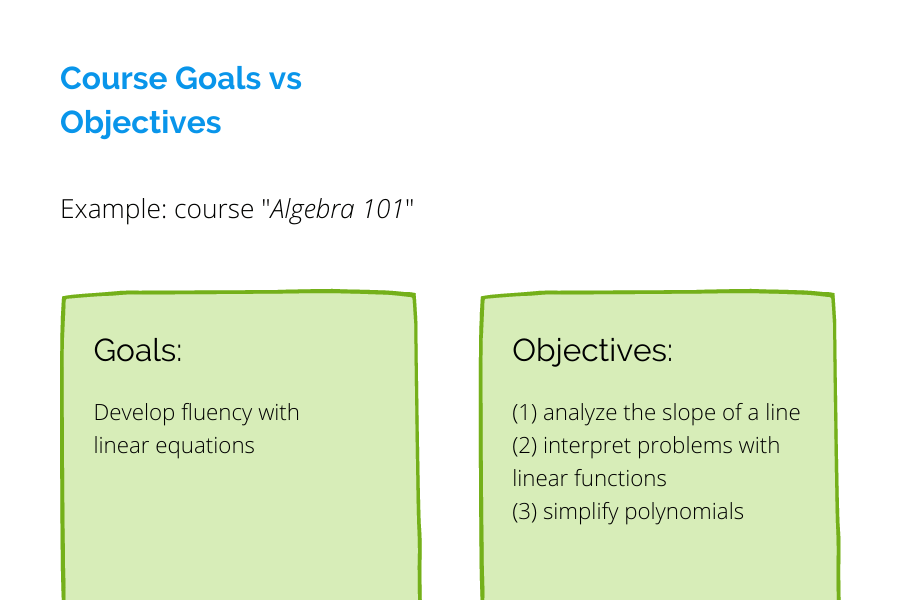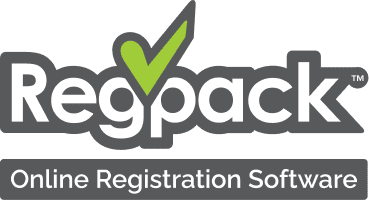Are you wondering how to create an e-course? After all, it seems to be the new trend in recent years in many industries to offer a digital course that provides instruction and personalized content to consumers along the marketing funnel.
Above all, you want to offer value.
If you’re looking for ways to engage with your audience and educate them while demonstrating your expertise in your niche, there are few ways as effective or valuable as an e-course.
That’s why in this post, we’ll show you everything you need to know about what an e-course is.
You’ll find out the benefits of creating one and learn the eleven steps you should follow to go from brainstorm to the final product—an e-course of your own.
Let’s get started!
Jump to Section
What Is an E-Course and Why Are They Popular?
Types of Courses
What Are the Benefits of an E-Course?
Steps to Create an Amazing E-Course
What Is an E-Course and Why Are They Popular?
Also known as an online course, an e-course is simply a class that is taught online.
Such courses have grown by 900% since 2000, and the industry is expected to triple by 2025.
They can take many forms and include a variety of components, including:
- Pre-recorded lectures
- Bundles of video lessons, text, and other forms of media
- Live sessions and webinars
- Assignments and projects
- Student groups and online communities
The popularity of e-courses comes down to their accessibility (especially during a pandemic).
Attendees can learn from the comfort of their own homes. Their relative affordability compared to college courses also makes them accessible to more people.
Such courses usually have a low entry barrier and are extremely diverse in topics, from academic knowledge to hands-on skills.
Creating and selling courses can be an extremely profitable choice for many businesses, regardless of the industry.
Many companies choose to take advantage of the e-course format to educate their audience, train employees, or simply get more brand recognition as experts in their field.
Types of Courses
There are many kinds of eLearning courses on the market today. Some of the most popular types include:
- Pre-sell courses — Course creators use these to gather feedback on a course idea and get an idea of the number and types of potential customers for the course before it’s officially released.
- Professional training program — A course of this type helps train employees and aspiring professionals in the information or skills required in a certain field.
- Mini-courses — Much like they sound, mini-courses are small versions of their full-sized counterparts. They provide a summary of the full course’s contents and act as a teaser of what the student can expect if they sign up for the full course.
- Live courses — Courses of this type consist of live meetings or sessions. The sessions may be lecture format, or they may include a variety of interactive content like discussions, meetings, quizzes, and games. Often, these courses will include downloadable files of the live session’s contents.
- Workshops or demonstrations — These work best with subject matter that is easy to teach through demonstration, like fitness, crafting, or other practical skills.
- Certification courses — Students will learn a skill by the end of the course and receive a certificate showing they have passed a test of competency.
- Academic courses — These follow a similar structure to university courses (and are most often offered by academic institutions). They usually include an introduction, a series of lectures, and assignments and tests for the course participants.
- Hybrid or blended courses — Many colleges and universities are combining in-person coursework with online learning in order to get the benefits of both types. Learning from an instructor in person can help facilitate customized instruction and more organic interaction, while eLearning is more cost-effective for the institution and more flexible for the student.
New twists on the idea are being introduced daily, allowing you a lot of freedom and creativity in shaping your own course.
What Are the Benefits of an E-Course?
Learners experience many benefits from taking an e-course.
If the course is self-paced, they’ll be able to work through the materials at a time and speed that works for their schedule and learning style.
This helps students avoid becoming overwhelmed or burned out.
Also, eLearning is oriented towards the students and their needs, as opposed to being built around the professor or course creator’s preferences. You want to provide the best learning experience for your students.
Taking an e-course is also much more cost-effective than a traditional college course.
Not only are courses themselves cheaper, but students often save the costs of commuting, buying expensive textbooks, and paying for childcare.
11 Steps to Create an Amazing E-Course
Now that you’re ready to create an e-course of your own, in this section, we’ll show you how to make a successful and engaging e-course from ideation to production and marketing.
1. Brainstorm Your Topic
Before you do anything else, it’s essential to determine your audience’s needs and decide how you can help meet them.
What kinds of topics does your organization specialize in—and more importantly, what topics would help bolster your brand’s reputation as an authority in your field?
Then, consider your audience.
Ask your loyal customers for input or feedback. This is where pre-sell courses come in handy.Find out what they want to learn about. Do research on the popular questions out there. Ask yourself:
- What pain points can I help alleviate?
- What problem can my e-course solve for my audience?
- What is my business already known for (that will make it easy for customers to be willing to pay money to learn from us)?
Make sure you niche your topic down, too. Keeping it too broad—while it feels right to appeal to as many people as possible—will actually make it less appealing.
Choose your specific target audience and adapt your topic to your niche to meet their specific needs.
2. Consult Subject Matter Experts and Stakeholders
Subject matter experts, or SMEs, can help you make your course more rich and valuable to your audience.
For example, if you’re creating a course on coding, you’d need to consult coders and software engineers for guidance on what to include in your course content.
Subject matter experts can provide information, context, and direction for your course—but it’s essential to set the right groundwork with them at the beginning of the course creation process.
Approach your SMEs with the course idea and involve them in the process from ideation to completion.
Establish expectations for everyone involved.
A good rule of thumb is to ask SMEs to provide knowledge for the course developers to scale down and adapt, then SMEs can check in periodically to provide feedback on the course as it is created.
Take stakeholders into account when creating your course, as well.
Make sure everyone invested in the course creation is onboard with its purpose, orientation, and intended results.
3. Define the Objectives
Next, use learning objectives to help break down your course’s specific goals into bite-sized aims.
Using learning objectives serves two functions: it gives instructors a clear focus in designing the course materials, while giving students a clear understanding of what to expect from the course.
Objectives also give a clear benchmark in determining if the course was effective (or if the student passed or failed).
It’s important to note that learning objectives and course goals are not the same thing.

A course goal is the overall goal for the entire course, while learning objectives are individual goals within the course goal.
For example, the course goal for “Algebra 101” might be for students to develop fluency with linear equations. Learning objectives within the course may be to (1) analyze the slope of a line, (2) interpret problems with linear functions, and (3) simplify polynomials.
Bloom’s Taxonomy
Bloom’s taxonomy of learning is a helpful tool in defining your course’s learning objectives.

While traditional courses focused on rote learning (i.e., memorizing facts), Bloom’s taxonomy breaks the learning process down into three components: knowledge, skills, and attitude.
The learning objective outlines what knowledge, physical skill, and/or attitude the student should have developed by the end of the course.
When writing learning objectives, focus on using action verbs that reflect one of Bloom’s six stages of learning:
- Remembering: Memorization of facts
- Understanding: Being able to explain or summarize something in their own words
- Applying: Being able to apply what they’ve learned in other situations
- Analyzing: Organizing information and drawing conclusions
- Evaluating: Comparing, contrasting, or making judgments based on what they’ve learned
- Creating: Producing something new based on what they’ve learned
These verbs let you define what you want to achieve with more precision, making it easier to eventually determine your students’ progress.
4. Decide on the Content
Next, settle on what types of actual content you’ll include in your course.
Gone are the days of professorial lectures and nothing else until the final exam.
Today’s adult e-learners expect creative and interactive ways to engage with what they’re learning—and for good reason.
While traditional learning styles may not exist the way we thought they did, learners do have the most success when the way they are introduced to and interact with new material is varied and engaging.
Therefore, consider including the following types of content in your course for maximum learner retention.
Discussion Forums
Many e-learners roll their eyes and groan when they see a requirement for discussion participation in their online classes —but that’s because many instructors don’t use this tool the way it should be used.
Many instructors simply require students to “participate in the discussion,” which results in half-hearted comments and very little productive conversation.
However, the trick is to set prompts and ask questions that will spark debate or make the students think.
When used correctly, discussion forums offer a chance for engaging with the material socially, explaining concepts to each other, and debating certain viewpoints or interpretations of the subject matter.
Self-Explanations
Students who can put the material into their own words by explaining it (either to themselves or others) are much more likely to internalize and remember the content.
Depending on the structure and audience of your course, consider ways to ask students to explain the material to themselves, such as:
- Making video content and presentations
- Explaining a concept
- Taking a side in a debate
By doing it in a guided way, you can ensure that all students benefit from this method.
Organized (and Skimmable) Content
While we want to believe our students will eagerly digest every word we write, it remains a fact that most people engaging with online content are scanning, keyword spotting, and reading non-linearly.
Help your students stay focused and easily navigate your written course content by using clear headings and subheadings.
Break up large chunks of text into smaller paragraphs, and put key words and ideas in bold.
5. Structure the Course
Next, plan your course online based on your chosen objectives and content types. Most eLearning courses are structured in the following way:
- Introductory video
- Modules (5-10 per course)
- Smaller lessons within modules (2-5 lessons per module)
- Bonus content, if any
- Conclusion and any calls to action (such as putting what they’ve learned into practice or signing up for another course)
So, how should you organize your modules within the online course structure?
This decision depends on what kind of content you’re teaching, as well as your students’ level of understanding.
For instance, an introductory course on crocheting might follow a step-by-step format, where each module builds on the prior one. Each step leads to the end result, which might be the students’ first crocheted hat.

A step-by-step format works well for beginners or entry-level students.
On the other hand, perhaps you have a specific time frame in which to teach the course. A time-based course, such as “Do a Handstand in Six Weeks,” works well for teaching skills (rather than a simple linear process).
6. Think of Assessments
A step-by-step format works well for beginners or entry-level students.
On the other hand, perhaps you have a specific time frame in which to teach the course. A time-based course, such as “Do a Handstand in Six Weeks,” works well for teaching skills (rather than a simple linear process).
6. Think of Assessments
One way to make sure your course is effective and delivers quantifiable results is to include methods of assessment throughout the process.
There are several ways to assess the attendants’ success in achieving the course aims, including:
- Quizzes and tests: This option is the most traditional. Instructors can use multiple choice and short answer tests to assess students’ retention of content.
- Open-ended questions: One of the simplest ways to assess your students’ progress is to ask open-ended questions, which requires the students to reflect on the topic and provide their own creative answers.
- Group projects: In courses that are not self-guided, students may benefit from being assigned a collaborative project where they’re assigned a prompt or topic relating to the course material. Have each group present to their peers, which allows students to give feedback to each other.
- Synthesization: Ask students to give a one-sentence summary of a lesson or concept. This proves that they understand it enough to synthesize it into one sentence.
- Problem-solving: Present students with a problem and ask them to brainstorm solutions.
- Branching scenarios: This complex assessment method involves creating a path made up of branching decision points. As they approach the end goal, each choice the student makes comes with consequences (positive or negative). Students will need to overcome obstacles using the knowledge they’ve obtained in the course.
It is a good idea to include these methods throughout the course, as continuous assessment allows students to monitor their own success.
7. Choose a Great Platform
When creating an online course, the quality of the platform that hosts it is almost as important as the quality of the course itself.
After all, if your students experience glitches or bugs when trying to access the materials, they’ll quickly become frustrated and resentful of the entire experience.
The learning management system (LMS) you choose should be easy to use, accessible on multiple kinds of devices, well-priced, and with excellent customer support.
You’d also do well to consider what kinds of reporting it offers—since in many courses, you’ll want to be able to check on your students’ progress quickly and easily.
Thankfully, there are several high-quality course platforms out there; the most popular are Thinkific, LearnWorlds, and Teachable.
Besides hosting your course itself, you’ll need something to help you register applicants.
Regpack’s course registration software is a simple solution for registrations and payment collections in those cases where platforms don’t have integrated payments (or when you want a custom solution).
Regpack offers:
- A personalized registration process
- A central registration database with your company’s branding
- Mobile registration and mobile payments
- Easy link sharing for live streams or pre-recorded content
You will need all of these to offer a seamless experience to your students.
8. Add Some Extras
It’s always a good idea to offer extra value or bonus content that attendees can take away from the course.
A great way to add value to your course is to offer additional content on top of the core course materials—which will be an added enticement to purchase the course in the first place.
Consider offering additional bonus materials such as templates, worksheets, or eBooks.
Anything that helps enrich your students’ knowledge about the particular topic is great fodder for bonus material.
You might also record interviews with experts—or with the course instructor themselves.
In courses that teach an advanced skill (such as resume writing, or web design), the instructor can offer one-on-one coaching as a bonus feature after the course is over.
Getting additional facetime with the instructor can add immeasurable perceived value to the course.
9. Keep Attendees Engaged
One of the most important aspects of course design is including elements that keep attendees engaged.
You can do this by being as open and approachable as possible to set the tone of the course.
Communicate frequently, including (and most importantly) at the very beginning of the course.
Introduce yourself and help your students see a person behind the name and profile picture.
Make it a habit to publish announcements or updates to your learning management system, and don’t forget to provide useful feedback on any assignments or presentations.
Instructors of self-guided courses can find ways to keep their students engaged, as well; one simple way is by encouraging communication and forming a community around your course.
Start a unique Facebook group or forum page specifically for course attendees, where you can actively cultivate a community of like-minded individuals who are all working towards the same goal.
When students feel involved in the community surrounding your course topic (or your brand), they’ll stay energized and be more likely to have a positive experience of your course in general.
10. Ask for Feedback
After the course is published, it’s essential to prove its effectiveness in order to improve future offerings.
Consider interviewing a select number of students (five is a good start) who have completed your course—or if you prefer, include a preformatted survey for all participants to complete.
Regardless of your method, use the following types of questions to elicit complete and effective feedback:
- Why did you choose to take this course?
- What is one thing that you enjoyed the most?
- What’s one thing that wasn’t included in the course that you wish you saw?
- What’s one thing you’d change about the course?
- Would you recommend this course? Why or why not?
- What rating would you give the course?
- What aspects of the course were confusing, if any?
- How confident that you can apply what you’ve learned in this course?
- How would you rate your experience of this course on mobile devices, if applicable?
This allows you to detect areas for future improvement and serves as positive reinforcement for all those things you do well.
11. Market Your E-Course
Once your course is finalized, the work doesn’t end! Unfortunately, you won’t get many subscribers if you don’t know how to market your new product to the right audience.
By now, you should already know your target audience.
Use that knowledge to zero in on your marketing strategy, including the specific pain point you’re alleviating with your course, your brand’s unique selling proposition, and even the communication channels where you’re most likely to connect with your audience.
You can also use basic marketing strategies like incorporating popular keywords into your title and paying for advertising campaigns across social media.
Don’t forget to include links to your course’s signup page everywhere you can, including on your website, social media profiles, and email signature.
Finally, take advantage of the many marketing channels available to you to spread the word.
If you don’t already have a YouTube channel or a podcast, consider starting one (or becoming a guest on another show) in order to promote your new course. Starting a new channel is very simple, create a gmail, use a youtube banner maker to create your visuales and start promoting!
And of course, don’t forget to promote the course in your blog posts.
The sky’s the limit—just get the word out there!
Create an Amazing E-Course That Provides Value to Your Students
An online course can be an excellent tool for educating your audience and increasing your brand authority at the same time.
Whether you’re a solopreneur, an established corporation, or anywhere in between, offering an e-course can provide many benefits—including cost effectiveness, accessibility, and enhanced brand recognition for the business.
If it’s your goal to create a successful e-course, be sure to follow the above tips to stay organized, engage your students, and find a ready audience for your newly-published course.
And when it comes time to start registering attendees, look no further than Regpack’s registration tool that lets you pack a professional punch. Get a free demo today!


















